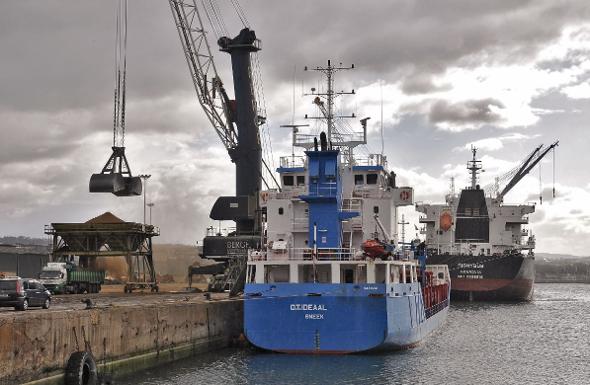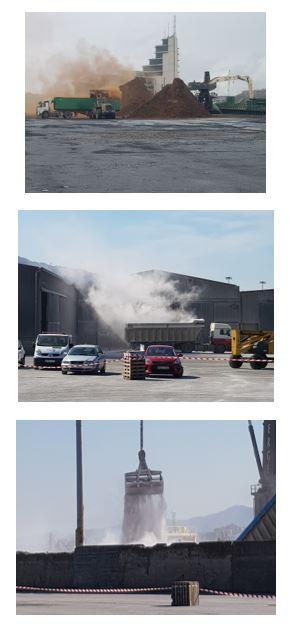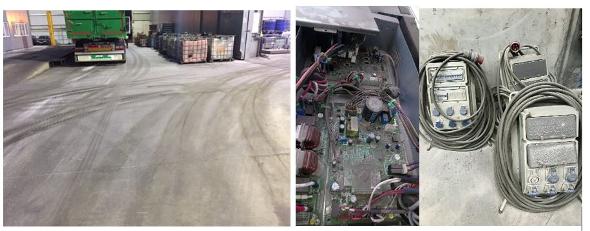Internationale Partnersuche
Innovation & Technologie Anfrage
Containment of dust emission from bulk materials while being loaded, unloaded, carried and stored in ports
Country of Origin: Spain
Reference Number: TRES20210610001
Publication Date: 11 June 2021
Summary
A port Authority in the north Spain has launched a challenge through an open-innovation platform: How can fugitive dust/particle emissions from solid bulks stored in the open air can be prevented from dispersing into neighbouring warehouses? A partner is sought to address this issue under a technical and/or a research type of collaboration agreement .
Description
Bulks are generally piled up and stored in the open air which make the particles susceptible to diffuse in windy weather conditions and when loading and unloading operations take place in ports. The dust-ability of the material itself causes severe risks to nearby spaces.
Apart from this risk that directly affects companies housed in the port, the presence of dust emissions generates other adverse aspects. Significant impacts caused by fugitive particles emissions in the environment:
a) Air quality affected by increase of particles in suspension,
b) Water quality deterioration by the pollution of sediments and eutrophication (this phenomenon occurs in a body of water when an increase of mineral and organic nutrients has reduced the dissolved oxygen, producing an environment that favours plant over animal life).
Social impacts:
a) Work safety – inhalation of particles, reduction of visibility
b) Industrial safety – fire hazards,
c) Food safety – increase of animal populations
Economic impacts:
a) Maintenance – higher cleaning costs, premature damage of equipment, loss of depth of port seabed,
b) Drop in the quality of services provided – cross-contaminations with other goods, shrinkage of goods, interference with other operations in the port.
The port has considered some solutions up to now: mobile panels, covers made of fabrics, water sprays, wetting and carinated conveyors chains. An alternative is sought as these have all proven unsuccessful due to diverse reasons than range from responsibility to economic / operative viability. It is the companies in charge of managing and store solid bulks the ones who must implement measures aimed at minimising possible damage derived from their activity. On the other hand, the most effective existing measures require heavy investment and are difficult to carry out. Lastly, the solution that may come forward cannot interfere with storing, loading and uploading operations of the solid bulks in the port. The aim of this goal is to generate an improved and productive working environment after allocating the right space to adjacent businesses initially incompatible.
Given the complexity of the challenge itself, partial solutions will be considered as well. As a rough guide, the following variables show the requirements and needs of possible solutions with their different levels of importance: from 3(lowest) to 9(highest). The solution:
a) can hold the particles in windy days/ when loading/uploading (compulsory)
c) is applicable when loading / when uploading (6)
d) is applicable when stockpiling (compulsory)
f) is not steady, can be taken to other spaces / easily transported/ light weight (3)
i) is not steady and easily assembled / dismantled (3)
j) is not steady and does not interfere with loading operations (6)
k) is financially viable and offered as a port service (compulsory)
l) is financially viable and its manufacture affordable / scalable (9)
o) is environmentally sustainable, the material does not deteriorate easily in the rain / wind, will withstand harsh climate conditions (compulsory)
p) is environmentally sustainable and made up of recycled materials (6)
q) is environmentally sustainable, its materials can be recycled or reused / long-lasting / complies with strictest norms(9)
s) will be implemented in less than 12 months and easy to use (9)
Schedule: submission of candidacies starting on 10th June, deadline: 24th September (18:00 GMT+1) through the open-innovation platform. The winning company will develop a pilot project of € 15,000 at most for a period of 6 months. There is an information link with indications on how to proceed with proposal that will be provided to interested candidates upon reception of EOIs.
Partially or totally developed solutions may come from any kind of organization worldwide in the form of a technical or a research type of agreement.




Expertise sought
The main development area this challenge is linked to is that of industrial design, thus engineering companies specialised in design as well as mining or processing industries and those providing ancillary technical services are the most likely candidates. Nevertheless, candidates from any field of expertise who will provide a solution will be accepted.
It is preferable that potential applicants be somehow related to environmental, recycling and waste treatment processes.
The partner should be able to develop either a partial or a comprehensive solution that combines two key factors: economic and operational.
Stage Of Development Comment
Solutions in a TRL3 phase will be accepted although those nearing TRL6 that after the in-situ port tests can reach a TRL7 or higher will be highly evaluated. The pilot to be developed by the award-winning company together with the port Authority will be validated in a real environment with real users. As the desired solution will have to be scalable, it will let the winning company apply it in many other ports in the world.
Requested partner
An SME, a startup, any company well-established in the extraction industry sector, a university division, etc… any type of organization that can come up with an industrial solution, either partial or global for solving the challenge will be welcome.
The solution put forward must be in its concept stage (POC-proof of concept)
Cooperation offer ist closed for requests

